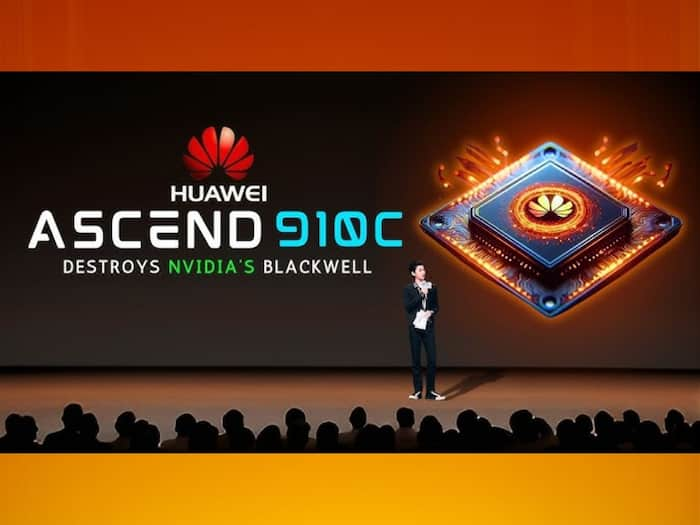
Written By Deepti Ratnam
Published By: Deepti Ratnam | Published: Apr 17, 2025, 10:41 AM (IST)

The global chip war between Huawei and Nvidia is on the verge of getting intensified and it’s no longer about smartphones or server chips. Nvidia has long enjoyed and dominated the AI hardware chipsets with its powerful GPU’s and deep software ecosystem. It has always been the backbone of today’s AI evolution with powering ChatGPT to enterprising AI infrastructure. But it seems, Huawei is stepping up its game and setting the arena for challenge with its aggressive innovation.
Huawei, despite facing heavy U.S. sanctions and restrictions, isn’t backing down. Instead, it’s investing heavily in its own AI infrastructure—and now, it’s taking the next big leap. Challenging Nvidia and taking a bold step, Huawei unveiled its new AI architecture that claims to even surpass some of Nvidia’s current chipsets. The newly launched chipset from Huawei comes under the Ascend 910C AI chip line which promises faster training speeds and lower consumption of power. Huawei named its new chipset as the CloudMatrix 384 Supernode that matches with the power of Nvidia’s NVL72 system and a direct competitor to NVIDIA’s GB2000 NVL72, NVIDIA’s most powerful AI server.
Nvidia launched its Nvidia’s NVL72 chipset last year in March with features like 72-graphics processing unit (GPU) whose speed is 30 times faster than previous generations. Nevertheless, Huawei’s newly launched chipset developed in Wuhu, China, has achieved achieved 300 petaflops of computing power as compared to 180 petaflops offered by Nvidia’s NVL72.
Huawei's Ascend 910C AI Chip Cluster "CloudMatrix" To Outperform NVIDIA's "Blackwell" GB200 NVL72 Systems; China Catches Up The AI Hardware Gap With The US https://t.co/ykYWw0PUK4 https://t.co/ykYWw0PUK4
— Hassan Mujtaba (@hms1193) April 16, 2025
In addition, the new Huawei chipset also promises the better performance in large-scale AI tasks. As per Huawei, this is company’s broader effort to build a fully self-reliant AI ecosystem which can handle cloud to hardware to development tools.
This new AI chip line is directly aiming at Nvidia’s dominance and what’s even more enthralling and intensifying is the timing of the launch of this chipset. As the global tension arises around semiconductor supply chains, China is keep on pushing harder than ever to minimize its dependency on US technologies.
The restrictions placed on Nvidia’s H20 AI chip, which was specifically designed for China, now comes under US export control and the rules implemented on Nvidia stops the company to export its high-performance AI chipset to China. This has now become one of the best opportunity for Huawei to bring down the reliance of US technologies in China.
Despite facing heavy US sanctions, Huawei managed to invest heavily in its own AI infrastructure and the company isn’t backing down. Huawei’s latest launch isn’t just a product release—it’s a statement.